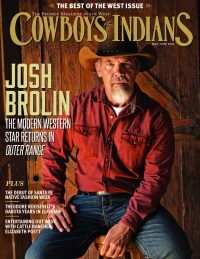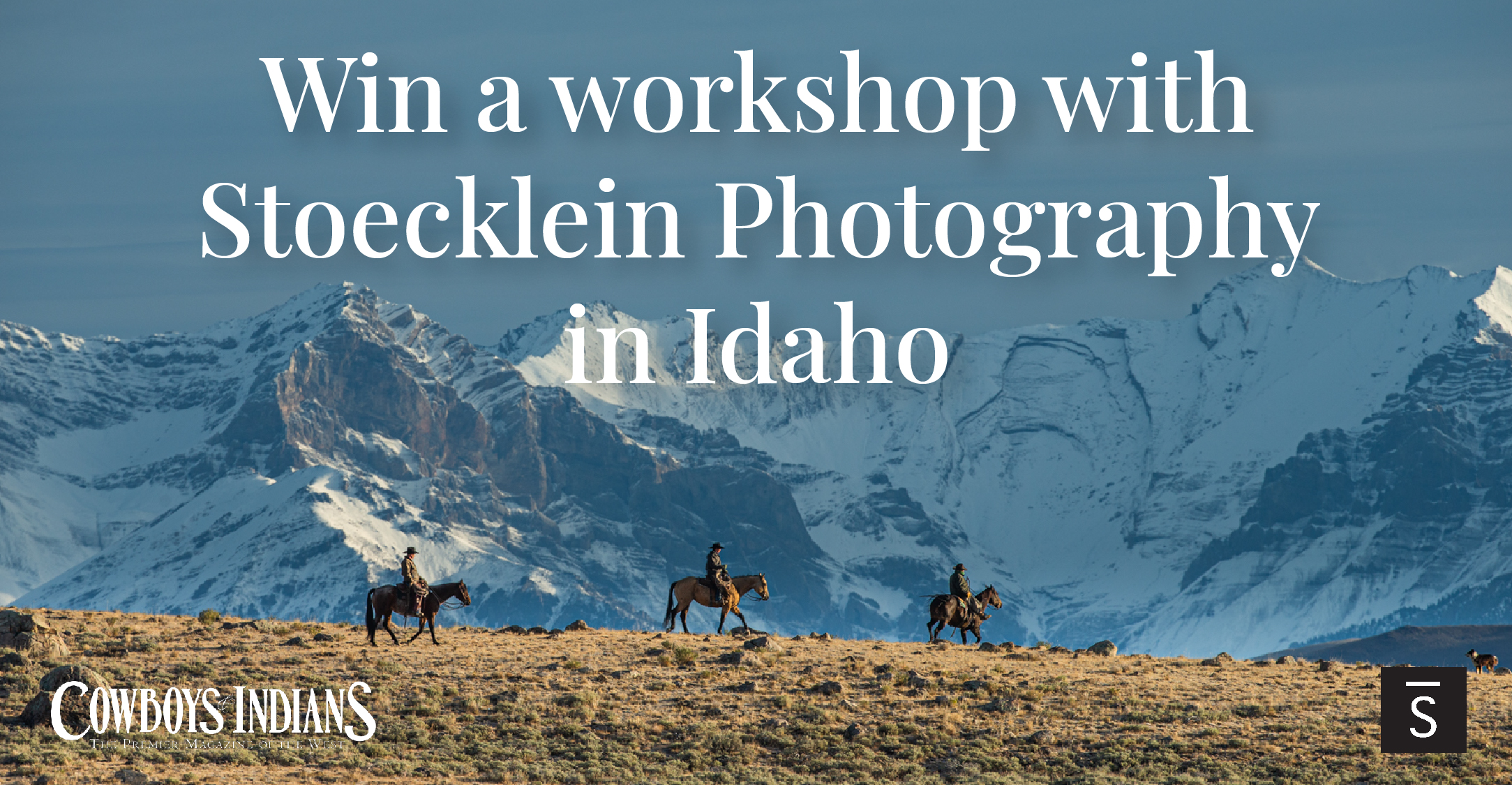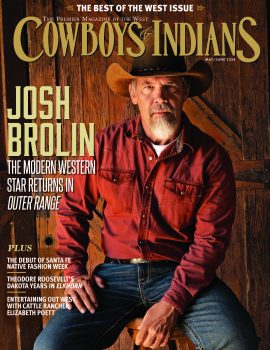If all you know about Oklahoma are 1996’s tornado-chasing Twister and Rodgers and Hammerstein’s musical, have we got some Sooner surprises for you. Here are C&I’s top picks for getting to know the 46th state a whole lot better.
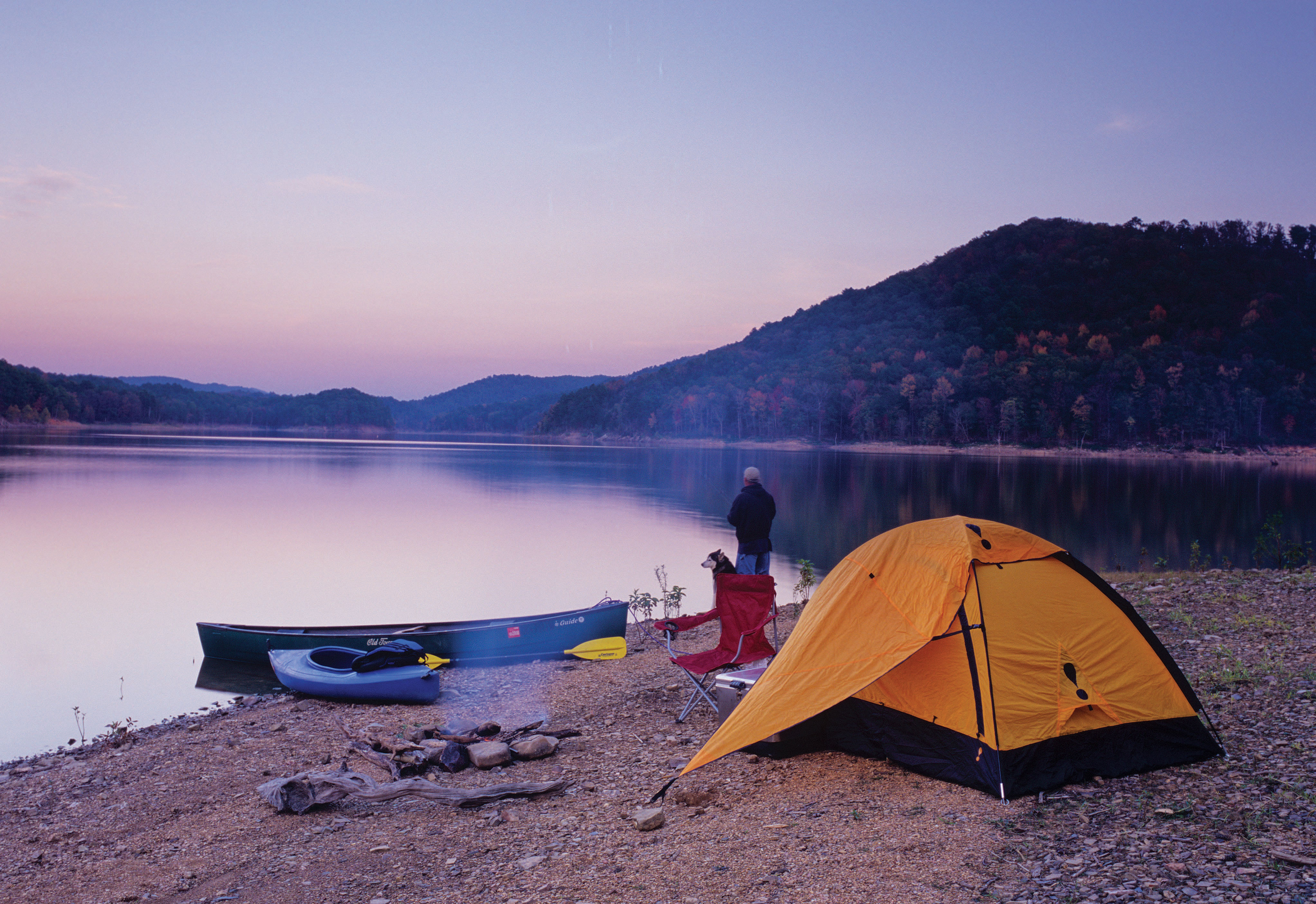
Road-trip, cabin-hop, and behold the beauty — and history — of the 46th state.
Peering out the window of a guest cabin upon gently falling snow blanketing the pines of the Sans Bois Mountains where Robbers Cave State Park is located, it’s hard to imagine this is Oklahoma. At the same time it’s easy to see how Belle Starr, Jesse James, the Dalton Gang, and the Youngers could have chosen this very terrain as a hide-out and why hunters, mountain bikers, boaters, rappellers, and equestrians choose this prime ground for some quality time outdoors.
Unlike most Plains States, Oklahoma is not flat. The Talimena National Scenic Byway is testimony to that as it snakes along the ridges of Rich Mountain and Winding Stair Mountain through the pines and hardwoods of Ouachita National Forest. The 54-mile stretch from eastern Oklahoma to western Arkansas turns fall colors that rival those of New England.
The Wichita Mountains — home of a 59,200-acre federal wildlife refuge — rise more than 1,500 feet, attracting hikers and rock climbers. The mountains are populated with elk, bison, deer, and longhorn. On the north side of the Arbuckle Mountains, Turner Falls plunges 77 feet; northeastern Oklahoma boasts the 77-foot Natural Falls.
Northwest Oklahoma has the towering sand dunes of Little Sahara State Park, the 11,200-acre salt flat of Salt Plains National Wildlife Refuge, and the caves of Alabaster Caverns State Park (including the largest natural gypsum cave in the world open to the public). The serene waters of the Osage Hills, the deep woods of the Kiamichi Mountains, and the stone spirals of the Quartz Mountain Nature Park similarly inspire the senses and rectify the misconception that the state is one big flat grassland.
Sidel up to the bar where Tom Mix poured.
You probably know who early western icon Tom Mix was, but you might not realize he tended bar at the Blue Belle Saloon in Guthrie. There, a chart of the actor’s body displays the locations of 12 gunshot wounds and 47 other bodily injuries Mix supposedly sustained in an adventure-filled life dreamed up by Hollywood publicity folks.
The Pennsylvania-born Mix got his big break when he landed a gig wrangling horses for a movie company filming on location in Oklahoma. Soon enough he was riding horses on camera and was on his way to building a career in Hollywood as a star of silent westerns.
But along the way to becoming a silver screen legend, Mix did have some adventures in Oklahoma. He served up drinks at the Blue Belle to such men as attorney-gunfighter Temple Houston (Sam Houston’s son); lawmen Bill Tilghman, Heck Thomas, and Chris Madsen; and future president Theodore Roosevelt.
If the saloon, which dates back to Guthrie’s days as a collection of tents during one of Oklahoma’s land rushes, feels like a trip back in time, the town itself feels like worked leather. The largest contiguous urban historic district in the United States, it has 2,169 Victorian homes and buildings. Downtown has the territorial capitol building, the Pollard Theatre, fashionable shops, upscale restaurants, the Oklahoma Territorial Museum, and the quirky Oklahoma Frontier Drugstore Museum. Hovering over the city is the 10.6-acre monolithic Scottish Rite Temple dating from 1919. The Lazy E Arena, site of many a rodeo, is on the south end of town.
Guthrie’s Boot Hill, in the Summit View Cemetery, has the highest concentration of outlaw graves in the West — Bill Doolin’s and Elmer McCurdy’s among them. Mix’s earthly remains? At Forest Lawn Memorial Park in Glendale, California.

Broaden your indigenous horizons at American Indian hotspots.
You might remember reading Where the Red Fern Grows as a kid. What you might not remember is that it was written by Wilson Rawls, the part-Cherokee author who turned what amounted to the autobiography of his poor Oklahoma childhood into a young-reader classic about a boy and his hunting dogs (there was also the 1974 movie of the same name). You can celebrate the story and the simpler times it evokes at the annual Red Fern Festival in the Cherokee capital (since 1839) of Tahlequah, where the novel was set (not far from Scraper, where Rawls actually grew up). The event features hound dog field trials, 1930s-era children’s games, a car show, and other old-fashioned entertainment.
As you make your way from Tahlequah four miles south to the old Cherokee community of Park Hill for a visit to the Cherokee Heritage Center, note the street signs: They’re in Cherokee. On the grounds of the center, you’ll find Diligwa, a village replicating “early contact” Cherokee life in 1710. Featuring 19 wattle and daub structures and 14 interpretive stations that explain Cherokee lifeways and demonstrate tribal crafts, the village also has two recreation areas that showcase Cherokee games like stickball. Inside the center’s Cherokee National Museum, permanent exhibits interpret the Trail of Tears, depicting events leading to, through, and beyond the removal of American Indian tribes from their ancestral lands.
As much as this is Cherokee country, it’s also Illinois River country, and Tahlequah is a popular jumping-off point for canoe, kayak, and raft float trips on the scenic river. You can go for 6 to 70 bluff-lined miles. Once you’re back in town, stop in at Sam & Ella’s Chicken Palace. Even though the name’s a joke (sounds like salmonella — get it?), the pizza pies aren’t. Carrie Underwood once waited tables here, but the pizza’s the real claim to fame. The Rock Island Red and Dominquer get high marks for being tasty and being named after chicken breeds.
On the other side of the state, there’s the Washita Battlefield National Historic Site, the Black Kettle National Grassland, and Black Kettle Museum, which commemorate peace negotiator Chief Black Kettle, the southern Cheyenne leader who was killed in Custer’s murderous raid on a village on the Washita River near modern-day Cheyenne.
Over in Sulphur, you can celebrate the culture and history of the Chickasaw at the Chickasaw Cultural Center, a world-class museum complex that comes alive with modern technology and theatrical environments. The grounds — on 109 rolling acres — feature an amphitheater, sky terrace, and traditional village.
In Lawton, the Museum of the Great Plains delves into the natural history of life in the West for Native Americans and pioneers; outside there are historic buildings including a train depot, trading post, and schoolhouse to explore. Also in town is the small but worthwhile Comanche National Museum and Cultural Center, where, among other of the tribe’s achievements, you can learn about the Comanche code talkers of World War II.
To get even farther back in time, head for the ancient Spiro Mounds near the Arkansas River in eastern Oklahoma. The only prehistoric Native American archaeological site open to the public in the state, the mounds, which were created and used by Caddoan-speaking Indians between A.D. 800 and 1450, are one of the most important American Indian sites in the nation. What began as a small farming village grew into one of the most important cultural centers of its day.
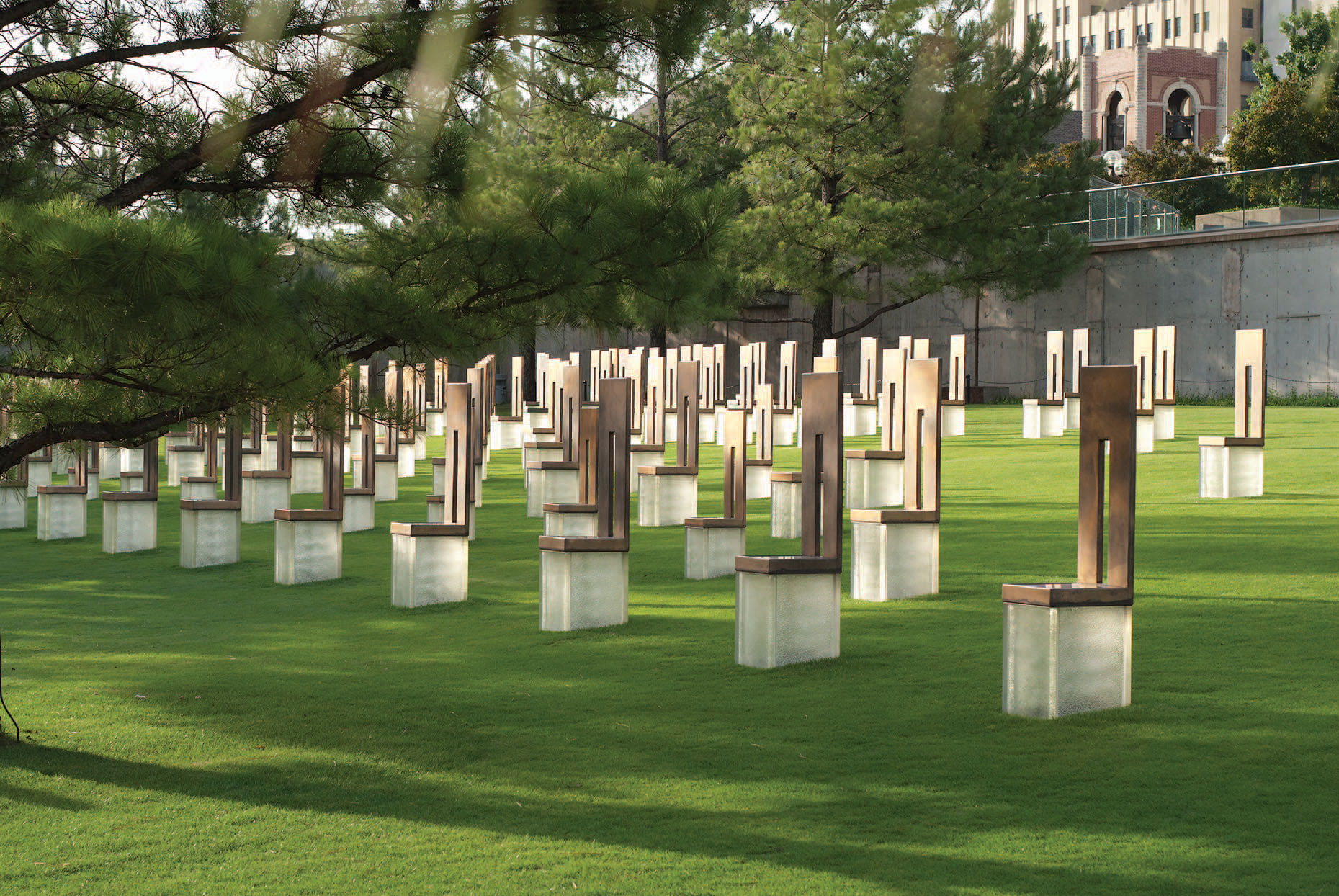
Pay your respects at the Oklahoma City National Memorial & Museum.
On April 19, 1995, a truck bomb destroyed the Alfred P. Murrah Federal Building in Oklahoma City, killing 168 people — 19 of whom were children under the age of 6 — and injuring hundreds. In the months after, the remains of the decimated structure were imploded and 4,000 – 5,000 tons of debris carted off. On the site, the Oklahoma City National Memorial & Museum now poignantly remembers the deadliest domestic terrorist attack prior to 9/11. The memorial includes sculptures resembling empty chairs (one for each victim), an American elm more than 90 years old known as The Survivor Tree, and a reflecting pool. Nearby, the museum houses artifacts and archives. It’s a powerful place — meaningful, important, and thoughtful. And, in a triumph over the brutality that occurred on that spot, the memorial is also touching and somehow even peaceful.
Prepare to be moved when you “meet” the victims, survivors, and first responders commemorated in display cases, stories, and videos. You’ll be emotionally rocked when you listen to a recording of a meeting that was in progress in a nearby building at the time of the explosion. And shock will hit you anew when you see children’s items from the on-site daycare, and the area that’s been left exactly as it was after the bombing.
Closure isn’t achieved through reliving the capture, trials, and punishment of the perpetrators, but rather through quiet contemplation on the memorial grounds. There, especially around sunset with the light coming through the Gates of Time and casting color over the reflecting pool, the empty chairs take on a life beyond time, place, and tragedy.
Take a chance and try your luck.
Tucked away in the trees as you approach Oklahoma’s Red River, the sprawling complex of WinStar World Casino and Resort causes heads to swivel for a better look.
Oklahoma has 39 American Indian tribes, and nearly all of them have a casino. Many of these properties go far beyond a typical casino, offering not just gaming but upscale accommodations, live entertainment by contemporary stars, swimming pools, golf courses, and fine dining.
Among the premier casinos, each of which boasts at least a half dozen bars and restaurants: in Thackerville, the WinStar (Chickasaw); in Durant, Choctaw Casino Resort (Choctaw); in Tulsa, River Spirit Casino (Creek); in Catoosa, Hard Rock Hotel & Casino (Cherokee); in Norman, Riverwind Casino (Chickasaw); on the Oklahoma-Missouri border, Downstream Casino Resort (Quapaw); and in Shawnee, Grand Casino Hotel & Resort (Citizen Potawatomi).
Get acquainted with Oklahoma’s Favorite Son, Will Rogers.
Cowboy philosopher, Cherokee entertainer, film star, radio commentator, and author — Oklahoma’s Favorite Son, Will Rogers, managed to integrate all those identities into one beloved package of all-American wit. His untimely death in a plane crash at age 55 forever associates him with Barrow, Alaska, but his native turf was Oklahoma and his homespun humor grew out of its red earth. Born November 4, 1879, on the Dog Iron Ranch just outside of Oologah in what was then Indian Territory of the Cherokee Nation, Rogers grew up on the 400-acre spread belonging to his influential father, Clem, a Cherokee senator, judge, cattleman, and early proponent of Oklahoma statehood (achieved November 16, 1907).
You can visit Rogers’ home — a two-story take on Greek Revival architecture nicknamed “The White House on the Verdigris” — and see the log-walled room where Rogers was actually born. Hike scenic trails, picnic under shade trees on the shore of Lake Oologah, and generally drink in the place that molded the man who said, “There are three kinds of men. The ones that learn by reading. The few who learn by observation. And the rest of them have to pee on an electric fence for themselves.”
About 20 minutes away in Claremore, you’ll find the Will Rogers Memorial Museum, where eight galleries feature artifacts from his vaudeville and trick-roping days, along with his saddles, art, and other memorabilia. Displays include the possessions that were found at the site of the airplane crash that killed Rogers and pilot Wiley Post.
Duck into the theater to watch Judge Priest or another of Rogers’ 71 movies, listen to his radio shows, walk the sunken gardens, and visit Rogers’ tomb inscribed with his credo and possibly most famous quote: “I never met a man I didn’t like.”
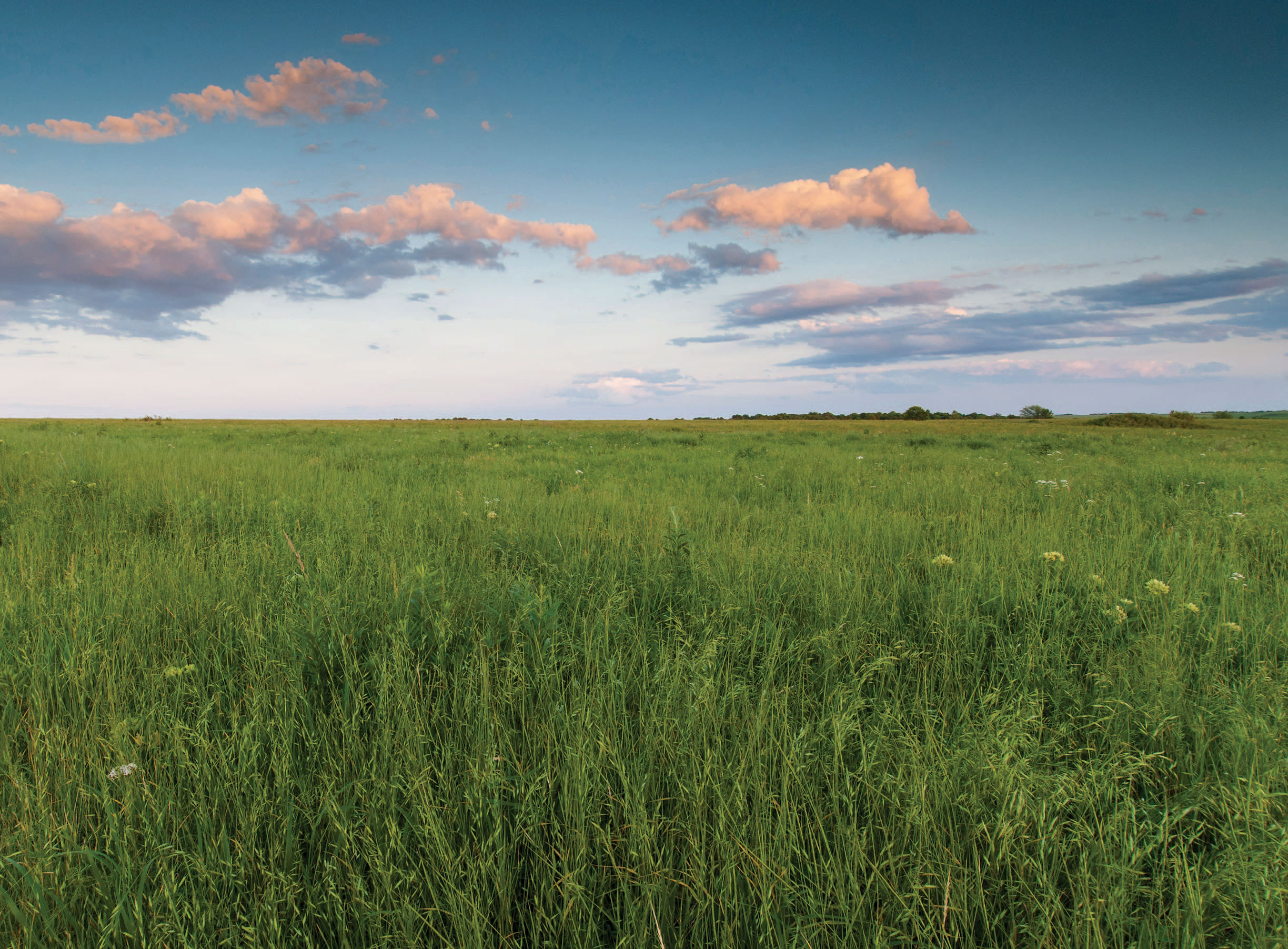
Become one with the prairie and the bison.
Fans of the 2004 film Hidalgo will remember at the end of that western, Frank Hopkins chose Blackjack Mountain in southeast Oklahoma to turn the titular mustang loose.
Why Oklahoma? Apart from hills and mountains and the urban interruptions of Oklahoma City and Tulsa, there’s a real sense of open range here. It’s one of the reasons why the state has more than 28 registered guest ranches. Osage County, or “The Osage” as Oklahomans call the area, perfectly captures this spirit. The 39,000-acre Tallgrass Prairie Preserve is the largest remaining chunk of tallgrass prairie on the planet — a perfect place for more than 2,500 bison to roam free. Nearby, the Woolaroc Museum and Wildlife Preserve is a 3,700-acre property set aside by oilman Frank Phillips in 1925 to illustrate the wildlife and art of the Old West.
Out west, near the Texas Panhandle border, open range fit for Hidalgo was captured on canvas by the late artist Augusta Metcalfe, whose Break O’ Day Farm contains a museum and art gallery of her work. Set on 640 acres of untamed prairie, the farm is practically on the banks of the Washita River. When you walk the trails, keep your eyes peeled for turkey, quail, raccoon, white-tailed deer, squirrels, and birds. You might spy painted bunting and indigo bunting, and, if you’re really lucky, maybe even a bald eagle.
Go jump in a lake and make a splash.
With 55,646 miles of shoreline along its lakes and ponds, landlocked Oklahoma gives coastal states a run for their aquatic money. Summers when I was a kid meant backing up to the boat trailer and heading off for the lake. It holds true today as Sooners spend their summers on the water. And why not? Oklahoma has more man-made lakes than any state in the Union. Many of them are inland seas. Lake Eufaula has 600 miles of shoreline and 105,500 acres of surface water, followed close behind by Lake Texoma with 88,000 acres of surface water. Other giant lakes include Kerr, Grand, Oologah, Keystone, Kaw, Fort Gibson, and Broken Bow.
Dotted with marinas, eateries, and campgrounds, lakes can be found near every major city in the state. Blue Hole near Salina is a swimming hole classic.
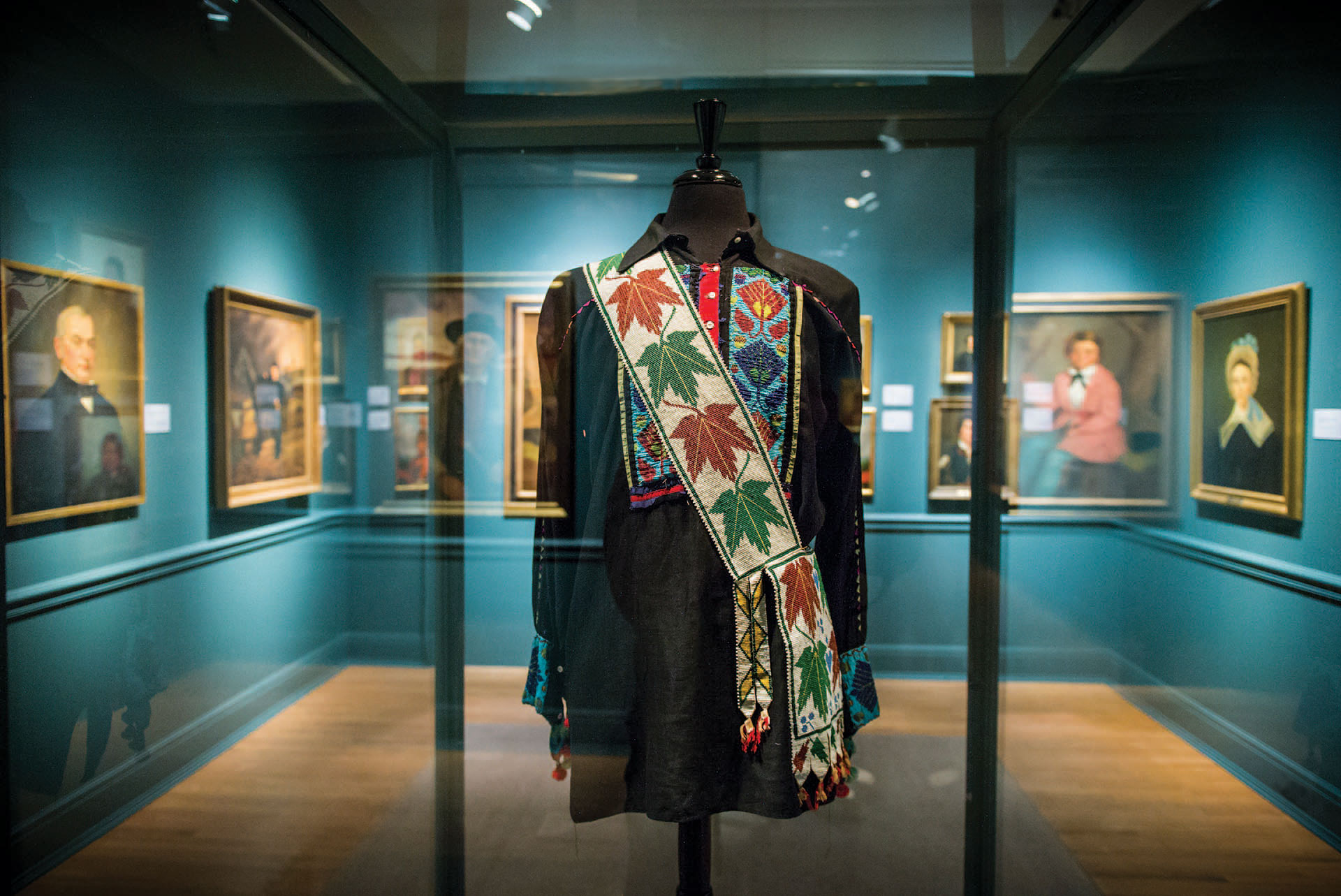
Immerse yourself in world-class art and museums.
When Rodgers and Hammerstein praised the rural aspects of the place in the title song for their famous Broadway musical Oklahoma!, they neglected to mention that next to the sweet smell of the wavin’ wheat when the wind comes right behind the rain, the Sooner State’s art scene’s awfully invigorating, too.
In Oklahoma City, there’s the Paseo Arts District; in Tulsa, the Brady Arts District (time your visit for the First Friday Art Crawl). Western, contemporary, traditional, modern — whatever your taste, the galleries and artisans here make for colorful browsing.
To really steep yourself in fine art, check out the thriving museum scene, too. The state’s rich with first-rate venues. In the heart of OKC’s arts district, you’ve got the Oklahoma City Museum of Art, home of one of the largest Dale Chihuly blown-glass collections in the world — his 55-foot glass tower is hard to miss. In Norman, there’s the Fred Jones Jr. Museum of Art at the University of Oklahoma. Perusing the French impressionism, 20th-century American painting and sculpture, traditional and contemporary Native American art, and art of the Southwest, you’ll understand why it’s considered one of the finest university art museums in the country.
You really hit artistic pay dirt in Tulsa, where the Philbrook Museum of Art, Philbrook Downtown, and the Gilcrease Museum will keep your eyes occupied for days. Besides the largest and most comprehensive collection of art and artifacts from the American West, the Gilcrease boasts 460-acre grounds in the Osage Hills and gorgeous 23-acre gardens, including a pioneer landscape; don’t forget the Vista Buffalo Burger in the restaurant.
If you dig prehistory, you’ll be happy as a pig in mud at the Sam Noble Oklahoma Museum of Natural History at the University of Oklahoma in Norman. Billed as one of the finest natural history museums in the world, the Sam Noble — named for the influential Oklahoma oilman and philanthropist — takes 50,000 square feet of exhibit space to tell the story of four billion years of Oklahoma’s natural and cultural history.
Go on a steak out.
Like a lot of Oklahomans, I grew up on chicken-fried steak. Which is only fitting since the dish was perfected here and it’s part of the official state meal (along with fried okra, squash, corn bread, barbecue pork, biscuits, sausage and gravy, grits, corn, strawberries, pecan pie, and black-eyed peas). Click’s Steakhouse in Pawnee has some of the state’s best chicken-fried steak, in addition to piles of juicy steaks served buffet-style. Up the road in Ralston, the Ralston Corner Café has the best cut-with-a-fork rib-eye you can get.
Oklahoma offers up a mix of upscale dining and greasy spoon choices, some historical. Cattlemen’s Steakhouse, located in the Stockyards City area of Oklahoma City, has served up meals for every stripe from cowpokes to presidents. The Stables Café in Guthrie dishes up everything from steak to spaghetti in the historic Tallman Feed and Wagon Yard. Eischen’s Bar in Okarche is standing-room-only for its famous fried chicken; while you wait, look for the bullet holes left in the wall by desperadoes. If you’re into college football, Stillwater’s Eskimo Joe’s will thrill you.
On Route 66 in El Reno, Johnnie’s Grill specializes in another state specialty: fried onion burgers. Pops in Arcadia boasts 700 brands of soda to wash your food down. And, of the Italian restaurants immigrant coal miners opened in Krebs, Pete’s Place stands out for its Choc Beer Company. The onsite microbrewery might seem like a recent addition, but namesake miner-turned-restaurateur Pete Prichard started selling Choc, which he made from a unique recipe brewed by the local Choctaw Nation of Indian Territory, out of his home in Krebs well before he opened a restaurant in his home in 1925.
If it’s a citified sit-down meal you’re after, both OKC and Tulsa have swank dining. But there’s something unique about taking an elevator ride up 49 floors to the top of OKC’s Devon Tower to Vast restaurant and tucking in to steaks and the awesome night view 726 feet above the Bricktown District.
Tune in on the Oklahoma Music Trail
Is it something in the water? The list of famous musicians from Oklahoma is crazy long and impressive: B.J. Thomas, Bob Wills, Chet Baker, Conway Twitty, D.C. Minner, Elvin Bishop, Gene Autry, esteemed Native American guitarist and session musician Jesse Ed Davis, Hoyt Axton, Jimmy Webb, J.J. Cale, Kings of Leon, Leon Russell, Kristin Chenoweth, Patti Page, Reba McEntire, Roger Miller, Roy Clark, Ronnie Dunn, Wanda Jackson.
After decades as a black sheep for his left-leaning folk anthems, Woody Guthrie’s something of a posthumous prodigal son in Oklahoma. His dilapidated 1860s-era boyhood home in Okemah was demolished in the 1970s, but developers are reportedly working to rebuild it. And Okemah hosts thousands of visitors from around the world every year during its Woody Guthrie Folk Festival, held on the weekend closest to July 14, his birthday. Meanwhile, the folk singer is celebrated in Tulsa at the newish (2013) 12,000-square-foot Woody Guthrie Center, a museum and archive across from the community park called Guthrie Green.
Elsewhere on the music trail, native Oklahoman Garth Brooks and wife Trisha Yearwood called a ranch in Owasso home for years. Ada-born Blake Shelton lives in Tishomingo (his Texas ex, Miranda Lambert, has a shop, The Pink Pistol, right there on Main Street). And Muskogee-born Carrie Underwood went to Northeastern State University in Tahlequah, where she was a Sigma Sigma Sigma gal and beauty pageant contestant before picking up the mic on American Idol.
But Okies aren’t all folk and country all the time. Jazz and swing guitar great Charlie Christian is memorialized every year in the historic Deep Deuce district in OKC that he and fellow jazz legend Jimmy Rushing called home in the 1940s. Deep Deuce’s annual Charlie Christian International Music Festival features jazz, blues, contemporary, Western, and old-school gospel.
If Western swing’s your thing, Tulsa is Bob Wills territory, where it’s not a musical pilgrimage if you don’t drop by the famous Cain’s Ballroom at least for a photo op. That’s where Bob Wills and His Texas Playboys did their first regular radio broadcast and Wills became a regular performer. On the National Register of Historic Places, Cain’s has hosted everyone from the Sex Pistols and Elvin Bishop to Carly Rae Jepsen and Robert Plant. On select nights and at lunch, you can even get Oklahoma Joe’s barbecue.
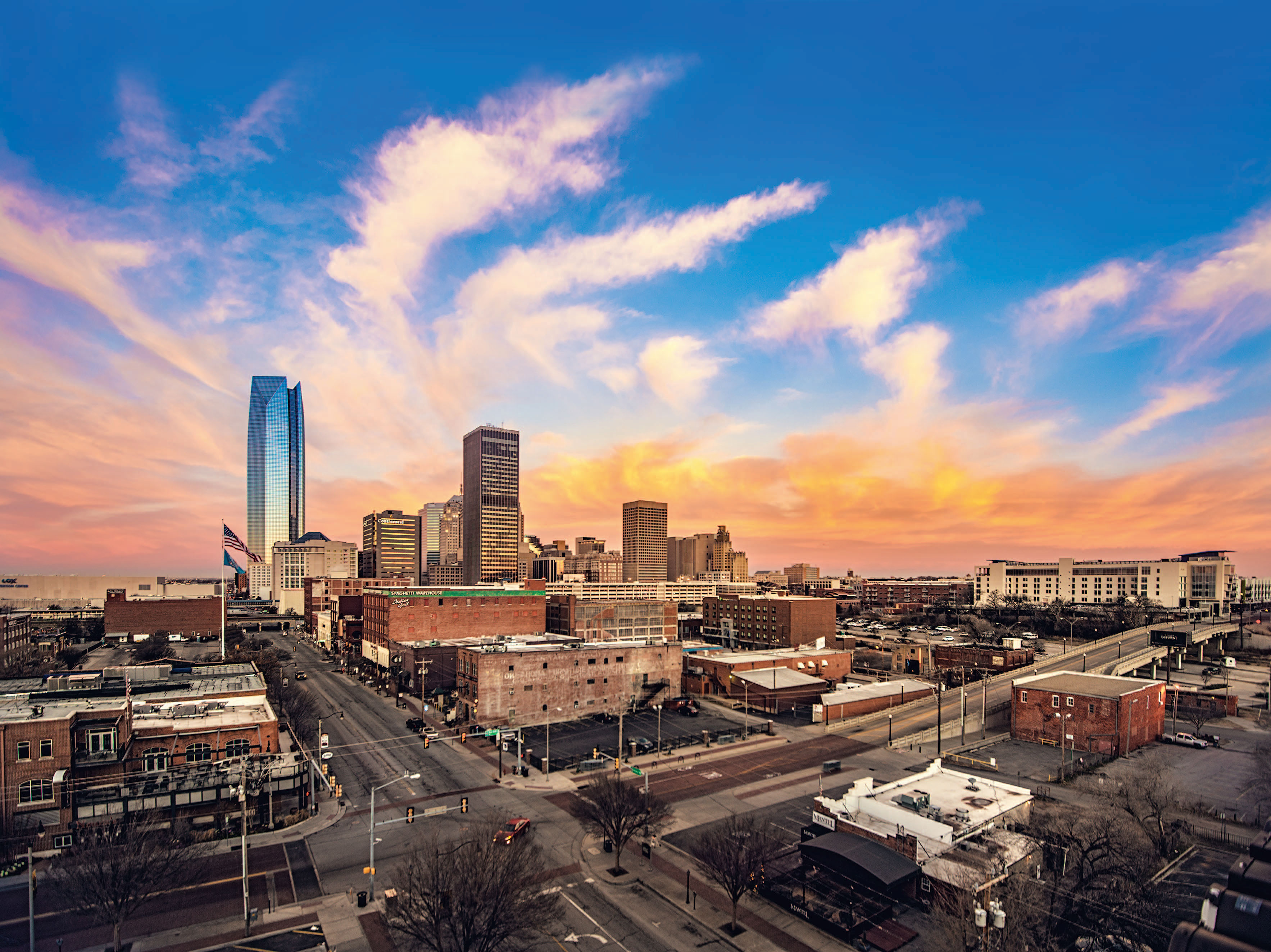
Get hip to the new OKC brand.
Still the Big Friendly, OKC is also the Big Reinvented. My recollections of Oklahoma City as a kid were of urban decay interrupted by car dealerships and stockyards. When people commented that Tulsa was a superior city, OKC took it on the chin.
A revitalization project changed all that. In a little over a decade, local business leaders relocated the Seattle SuperSonics to OKC, renaming them the Thunder, while city officials oversaw the transformation of a major warehouse district they dubbed Bricktown into an entertainment center of upscale shops and restaurants complete with the Chickasaw Bricktown Ballpark and a navigable canal. The North Canadian River was reworked into a series of tidal pools for recreational boating and renamed the Oklahoma River.
The state capital can now boast on the Bricktown entertainment district, Thunder basketball, the world-class Oklahoma City Zoo, Remington Park horse racetrack, Stockyards City, Myriad Botanical Gardens, and the Frontier City amusement park, along with a collection of new first-class downtown hotels.
And there’s a historic landmark hotel to check out, too — a supposedly haunted one, no less. The city’s oldest hotel, the Skirvin opened in 1911 and was resurrected with a multimillion-dollar renovation completed in 2007, after years of standing dormant and endangered. You might not find evidence of the rumored presence of a maid named Effie — who, according to legend, was imprisoned in a room on the 10th floor after an affair with the owner and founder, oil millionaire William Balser Skirvin, resulted in an illegitimate child, with whom she supposedly jumped to their deaths out a window. But you can still make your stay memorable with a chocolate martini or two at the hotel’s atmospheric Red Piano Lounge.
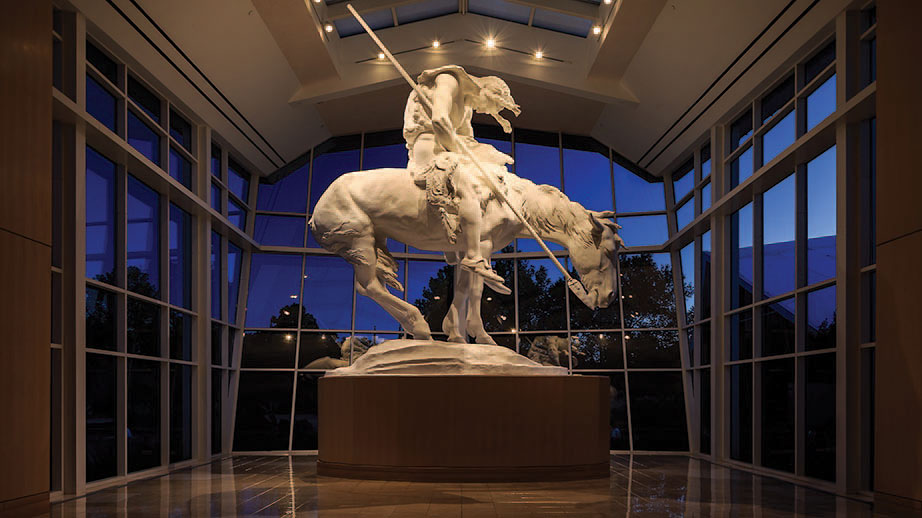
Get your buckaroo burnished at the National Cowboy & Western Heritage Museum.
Worn and scarred, a sign nearby asked visitors not to touch Gary Cooper’s saddle. He had just passed away, and because of that, my parents decided to visit the National Cowboy & Western Heritage Museum. I was 6, but even as a little kid, I could tell from the empty hallways that there was more ambition than substance to the museum way back in 1961.
Today, with 200,000 square feet displaying more than 28,000 Western and American Indian artworks and artifacts, those ambitions seem fulfilled. Works by artists like Charles M. Russell, Frederic Remington, and Albert Bierstadt are featured, along with galleries on cowboys, rodeos, Native Americans, and firearms of the Old West. There’s even a life-size replica of a turn-of-the-century prairie town.
All this is crowned by two large-scale sculptures: James Earle Fraser’s 18-foot The End of the Trail and Remington’s Coming Through the Rye.
Feel the power of the powwow — and other great gatherings.
Their faces painted in white, black, and red rivaling their traditional brightly colored clothing, hundreds of dancers representing more than 100 tribes take the stage. If there’s one singular event to visit Oklahoma for, it’s the Red Earth Native American Cultural Festival held every June in Oklahoma City. It draws more than a thousand Native dancers and artists from around the nation. And that’s just one example. From early spring into fall, powwows are taking place all across the state.
On the cowboy side of things, Oklahoma hosts some 40 signature rodeos, including the PBR Oklahoma City Invitational, Tulsa Heritage Rodeo, National Barrel Horse Association State Finals in Shawnee, the Pioneer Days Rodeo in Guymon, and the Will Rogers Stampede PRCA Rodeo in Claremore. For that small-town-big-event feel, visit the Pawnee Bill Memorial Rodeo in Pawnee in August or the Woodward Elks Rodeo in July.
Oklahoma also has the Rush Springs Watermelon Festival, Waynoka Rattlesnake Round-Up, El Reno Fried Onion Burger Day, Watonga Cheese & Wine Festival, and the Poteau Balloon Festival. And we’d be remiss if we left out the annual World Championship Cow Chip Throwing Contest in Beaver, the cow-chip-throwing capital of the world.
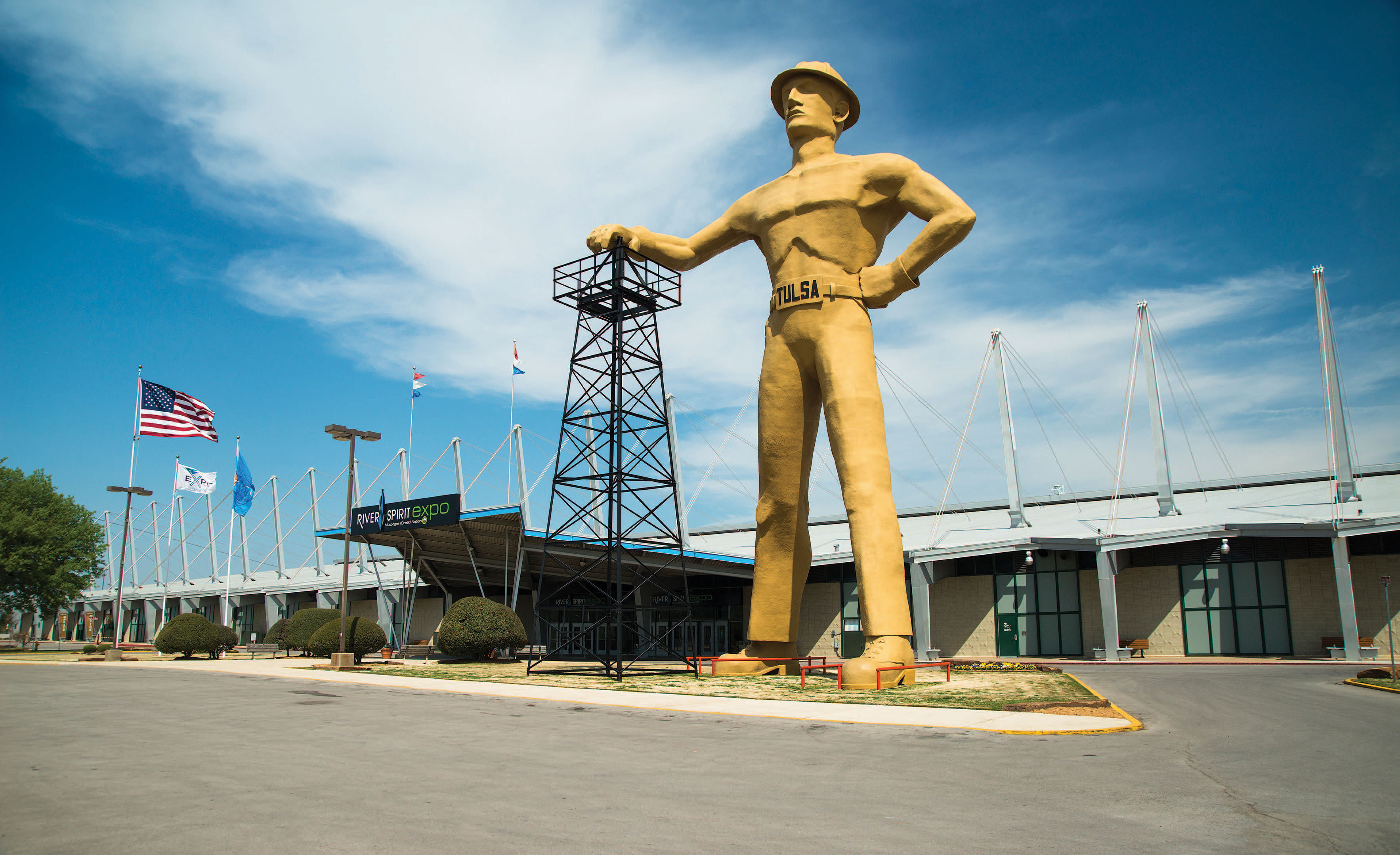
Take a walk on the oil side.
Right in front of the Tulsa Expo Square with one hand on top of an oil derrick, the 76-foot-high golden image of an oil field worker is audacious to say the least.
The colossal Golden Driller — the fifth tallest statue in the United States — is there to make a statement: Oil created modern Oklahoma. The state’s oil industry owes its birth to wildcatters such as Frank Phillips, E.W. Marland, Harry Ford Sinclair, William Skelly, and Tom Slick. They would sit under the shade of the Million Dollar Elm on a hilltop in Pawhuska in 1912 bidding their entire fortunes on Osage oil leases. (There is now a plaque where the elm once stood.)
The end result was gas stations dotting America — Conoco, Phillips 66, Sinclair, Skelly, CITGO, Champlin, Knox, and Kerr-McGee, all originating in Oklahoma. Oklahoma’s colleges and museums, such as Phillips’ Woolaroc, sprang from oil riches, as did the only skyscraper ever built by Frank Lloyd Wright, the Price Tower in Bartlesville.
E.W. Marland, founder of Marland Oil (later named Conoco), built the Marland Mansion in Ponca City. All gold leaf and secret doors and tunnels, it was the largest mansion west of the Mississippi in its day. With his oil money, Marland also had the 17-foot-tall Pioneer Woman statue constructed in Ponca City to honor the women who opened the West.
As for the discovery of the oil that made modern Oklahoma what it is? That happened in 1859 near Salina.
Read more about Oklahoma and the people who make it great.
From the July 2016 issue.



